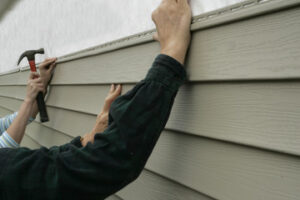Leaders help businesses stay on course, navigate challenges, and reach strategic goals. But the ability to do this is not innate. It requires leadership development programs.

Leadership programs must be designed with the company’s business priorities in mind. However, some essential building blocks are universal to every organization. These include: coaching, access to top management, and peer mentorship groups. Contact Ripple Effect Culture for more details.
Among the many leadership skills required to be an effective leader, one of the most critical is communication. The best leaders are able to relay information with ease, inspire their teams, and convey a vision that drives productivity. They are also able to listen to their teams and address any grievances. In addition, they communicate with other departments, clients and stakeholders in a timely manner.
Effective communication skills are essential for success as a leader, especially in today’s fast-paced business environment. As a result, it’s important to develop these skills through leadership training and practice.
According to Gerry Kierans, an executive coach and co-author of the book Developing Your Leadership Potential: The 7 Cs of Effective Communicating, effective communication is “the ability to convey important information in a way that people find compelling.” This is why it’s so vital for leaders to be able to explain their vision and how they plan on reaching it. This unites team members around a common goal and creates a sense of community.
In addition to verbal communication, it’s important for leaders to be able to write and present information in a clear, concise way. This can include emails, memos, reports, presentations, and meetings. It’s essential to use a variety of these formats to keep employees informed, but it is also important for leaders to understand the difference between each one.
While verbal communication is vital, it’s equally important for leaders to be able to listen to their team members. This enables them to gain trust and feel comfortable sharing their goals, concerns, opinions, and ideas. They must also be able to answer questions in an honest and genuine way, which helps build a positive workplace culture.
In the past, communication was done in-person and face-to-face. However, as technology advances, the way we communicate has changed dramatically. For example, it’s not uncommon for leaders to have video conferences with their team members instead of in-person meetings. Because of this, it’s essential for leaders to be able to adapt and learn how to communicate effectively with their teams online.
Problem-Solving Skills
Problem-solving skills are critical for leaders to have, as they help them overcome obstacles that may hinder their team’s or company’s progress. Leadership development programs help to develop these skills in leaders at every level of the organization.
Strong problem-solving abilities help leaders to identify challenges and implement strategies that improve their teams’ productivity, job satisfaction, and overall performance. Leaders with good problem-solving skills also have a strong understanding of their organizational goals, which allows them to navigate through challenges and seize opportunities as they arise.
Leaders who are skilled at problem-solving can break down complex problems into manageable components, which helps them take a systematic approach to finding solutions. They are able to think critically and strategically, while remaining calm under pressure. They can also evaluate their own and others’ ideas to clarify the problem at hand, as well as create a safe environment for creative thinking and alternative perspectives.
Some people are natural leaders and have innate problem-solving capabilities, but most of us need to work on these skills through training, practice, and mentoring. Effective leaders are able to use their problem-solving skills to find creative ways to solve issues, and they can motivate their teams to do the same.
Effective problem-solving requires a diverse range of skills, including research, brainstorming, and communication. For example, a leader might need to interview stakeholders, study financial data, or search the organization’s intranet in order to understand the nature of the challenge at hand. They should also be able to communicate with their team members effectively by listening and encouraging collaboration.
Finally, they need to be able to make decisions based on the available information, and they must also be able to adapt their decision-making process when new information becomes available. For example, if the market changes, they might need to adjust their sales strategy accordingly. Or if they encounter internal conflicts, they might need to implement a new conflict resolution process. Lastly, they should always keep their eye on the bigger picture to ensure that their decision-making is aligned with their organizational objectives.
Self-Awareness
Leadership development is a multi-faceted process that improves the skills and confidence of leaders within your business. It also nurtures a vital work culture that is essential for success. It is a common component of succession planning, which is the practice of identifying high-performers for future roles within the company.
A key aspect of leadership development is self-awareness, which is the ability to recognize your strengths and weaknesses as a leader. The best way to become self-aware is by soliciting honest feedback from people you trust and respect. This feedback can come from peers, subordinates and even your supervisor. It can help you identify areas where you need to work on your soft skills and hard skills.
It can also be a great way to gauge your progress in the areas identified as your growth opportunities. This type of feedback can be difficult to achieve, especially in a leadership role where people are often reluctant to open up. Nevertheless, a powerful performance management solution like Qualtrics Employee XM can help you to collect and share constructive feedback in a more transparent way, providing the critical insights you need to develop as a leader.
When it comes to leadership development, there are a variety of programs available for individuals of all levels in the organization. They can range from one-day workshops to extended immersion experiences that involve a variety of learning methods. These programs are often designed to teach leadership styles that match the needs of your specific company.
One of the most common types of leadership development is on-boarding, a process that helps new hires assimilate into your corporate culture and understand their performance expectations. A well-designed onboarding program can provide a foundation of support that will enable your employees to achieve their full potential as leaders in your organization.
Another type of leadership development involves mentoring and coaching, which are both a form of soft skill training. Mentoring and coaching can help employees grow as leaders, as well as strengthen team morale. They can also be used as a tool to promote inclusion and effective communication within the company. This is especially important for organizations that want to build a cohesive and productive team environment.
Motivation
Leadership development is a way to train leaders at all levels of a business to better manage and motivate people. This training can include coaching, experiential learning and other areas that help individuals improve their leadership abilities. Large companies often have specialized teams dedicated to managing these programs. They may also offer an array of online courses that cover different leadership topics.
Effective leadership can make or break a company’s success. A company with effective leaders can thrive and grow, while one with ineffective leaders can falter and struggle unnecessarily. The good news is that leadership development can provide future leaders with the hard and soft skills they need to drive their companies forward.
Many companies today use leadership development to train their employees in the newest technologies and to help prepare them for new leadership roles. This is particularly important because the modern workforce is constantly changing and redefining what it means to be successful professionally and personally. Leadership development can also help managers learn new leadership models and adjust their management style to meet the needs of a diverse workforce.
A strong teamwork ethic is also a vital part of leadership development. Leaders who can effectively build a team are more likely to succeed at their jobs, and they will be more likely to create a positive work environment for everyone in the company. Leadership development can teach team building strategies and help develop a strong communication network among employees.
The success of a business is dependent on a number of factors, including the quality of its leadership and employee morale. Leadership development can be a great way to improve workplace morale and give employees the tools they need to excel in their careers.
Motivation is an essential part of any leadership development program. It helps a person stay focused on his or her goals and achieve them. The process of motivation encourages a person to work efficiently in order to reach his or her goal and this way the person can become a more productive worker. In a motivating work environment, the relationships between superiors and subordinates are improved as the higher level workers always try to assist the lower rank workers. This kind of relationship leads to the creation of a supportive work environment and all the employees strive in a similar direction to accomplish organizational goals.



